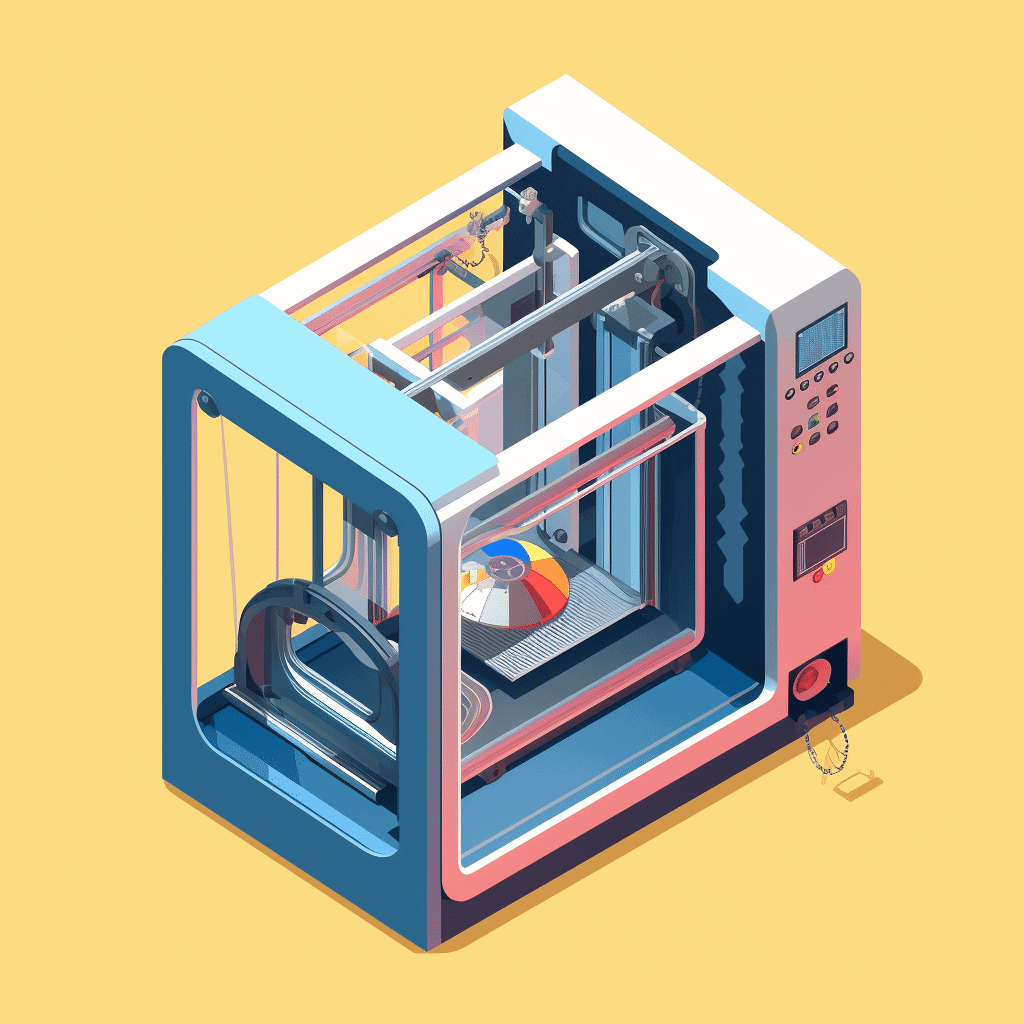What is a 3D printer
3D printers, these machines that are intriguing, revolutionary but also very mysterious. But what is a 3D printer? We usually talk aboutprofessional printers classics allowing you to print copies at lightning speed but today we are talking about the field of 3D printing and let’s discover together how it works and see if it is necessary for your business?
The 3D printer, a true concentrate of technique and ingenuity, brings objects to life by proceeding in successive layers. Thanks to the controlled fusion of various materials such as filament for FDM models or metal powders for those using lasers, this revolutionary device transforms a simple digital file into a solid and functional part. A fascinating world thus opens up to users curious to explore these innovative and promising techniques.

The additive manufacturing process
The heart of the 3D printer lies in the additive manufacturing technique, which consists of creating objects by superimposing successive layers of material. Unlike traditional production methods, this technology makes it possible to produce parts with complex shapes with remarkable precision. 3D printers use different materials such as plastic, resin, metal powder or even filament to bring creations to life.
The creation of an object from the original idea to its physical realization begins with a digital file containing the information necessary to guide the printer during the production process. This code, usually in STL or OBJ format, is then interpreted by the printer software which controls the movements of the laser or extrusion head to deposit the materials layer by layer until the object takes shape. .
The main 3D printing techniques
Among the many 3D printing techniques available on the market, some stand out for their popularity and efficiency. One of them is the FDM (Fused Deposition Modeling) technique, which consists of melting a plastic filament and extruding it through a nozzle to deposit successive layers.
The selective laser melting method is another commonly used approach, particularly for the manufacture of metal parts. In this process, a powerful laser melts a thin layer of metal powder according to the model defined by the digital file, thus solidifying the material to create the desired shape.
There are also techniques using photopolymerization, where a light-sensitive resin is hardened by a laser or UV projector, allowing the creation of objects with very fine details and great precision.
Applications and possibilities offered by 3D printers
Thanks to their ability to produce objects with complex geometries in different materials, 3D printers find applications in various fields. The aeronautics, automotive, medical and even design sectors have already adopted this technology to develop prototypes or produce functional parts.
Here are some examples of fascinating applications offered by 3D printers:
- Creation of tailor-made prostheses for patients
- Manufacturing of personalized dental implants
- Production of spare parts for the automotive industry
- Production of architectural models and scale models
- Printing of decorative and artistic objects
In short, 3D printing is a technology with almost infinite possibilities, which allows the creation of unique objects with complex shapes with great precision. Whether in industry, medicine or the arts, 3D printers continue to push the boundaries of manufacturing and open up new perspectives for our future.
Explore the benefits and challenges of 3D printing
3D printing is recognized for its many benefits, including reduced production times, customization of objects and reduced manufacturing costs. By removing the constraints of traditional methods, this technology enables rapid experimentation and innovation, providing unparalleled flexibility to designers and manufacturers. In addition, 3D printing contributes to reducing the ecological footprint by limiting waste production and optimizing the use of materials.
However, despite these undeniable advantages, 3D printing also presents certain challenges. The quality of printed parts can vary depending on the technology used and the parameters chosen, which can lead to strength and durability issues. Additionally, the initial costs of 3D printers and materials can be high, although these investments can be amortized in the long term through production savings.
Future prospects for 3D printing
The future of 3D printing is bright, with new technologies, materials and applications constantly developing. Research focuses on improving printer performance, reducing costs and expanding the possibilities offered by these machines. 3D printers will thus be able to meet increasingly specific and complex needs, while being accessible to a wider audience.
Among potential developments, 3D printing could enable the creation of biological tissues, paving the way for regenerative medicine and tailor-made organ transplants. Additionally, 3D printers could be used to construct buildings and infrastructure, reducing costs and waste associated with traditional construction.
3D printers for individuals
Along with the growing adoption of 3D printing in industry and research, 3D printers for consumers are gaining popularity. These compact and affordable machines allow amateurs and enthusiasts to make their own creations at home, promoting learning, innovation and personal creativity.
The impact on the supply chain
3D printing has the potential to radically transform supply chains by enabling more decentralized production and reduced delivery times. Companies will be able to produce locally and on demand, thereby minimizing costs related to the storage and transportation of parts.
Embracing the revolutionary potential of 3D printing
Ultimately, 3D printing is a rapidly expanding technology that offers unprecedented possibilities for creating unique and complex objects with great precision. This fascinating world continues to evolve, continually pushing the boundaries of manufacturing and opening new perspectives for our future. So, if it’s interesting for your industry and more specifically your business. It would be interesting to delve into this captivating universe. You will be able to discover how 3D printing can revolutionize not only your industry, but also your daily life.

Leave a Reply